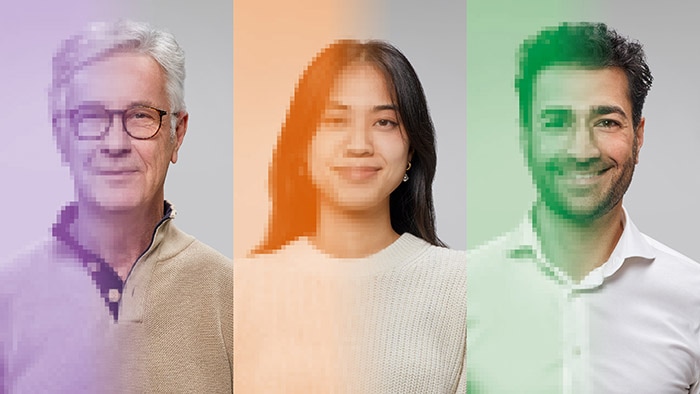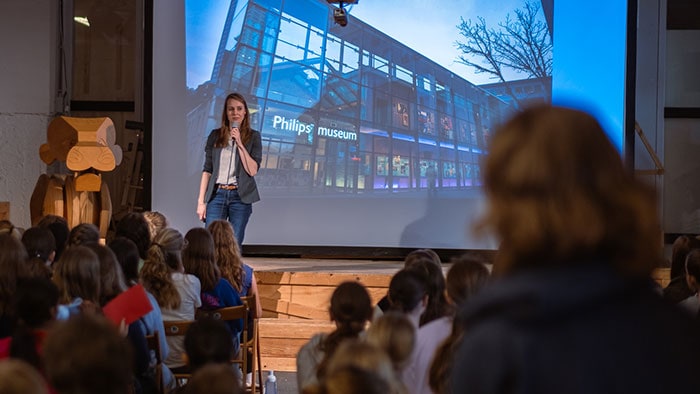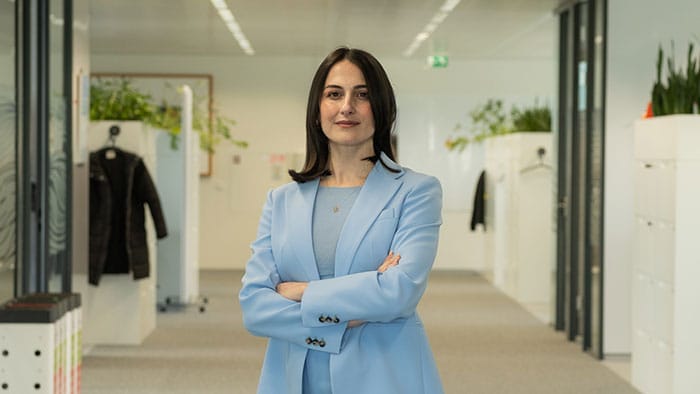Data en kunstmatige intelligentie omzetten van een belofte naar een daadwerkelijk klinisch voordeel; in een notendop is dat de missie van Anca Bucur. Oorspronkelijk deed ze dat binnen Philips als computerwetenschapper, maar gaandeweg breidde haar rol zich uit tot die van uitvinder, ondernemer en expert voor de Europese Commissie.
Het leverde haar zelfs een ticket op voor een hackathon in het Witte Huis.
Kunstmatige intelligentie (AI) wordt beschouwd als één van de meest veelbelovende technologieën in de gezondheidszorg en in andere sectoren. Wanneer is je fascinatie ervoor begonnen?
"Al lang voordat het zo bekend werd, zou ik zeggen. Kort nadat ik in 2003 bij Philips begon, werden machine learning en semantic reasoning twee van mijn aandachtsgebieden. Vandaag de dag zijn mensen zich gelukkig veel meer bewust geworden van het echte potentieel van AI, naarmate het verder ontwikkelde en volwassen werd."
"In mijn werk help ik collega's in het onderzoek en het bedrijfsleven om het potentieel van AI te realiseren in al onze bedrijfsclusters. Samen kijken we hoe we onze producten met behulp van de volgende generatie AI verder kunnen verbeteren, om tastbare voordelen voor onze klanten toe te voegen."
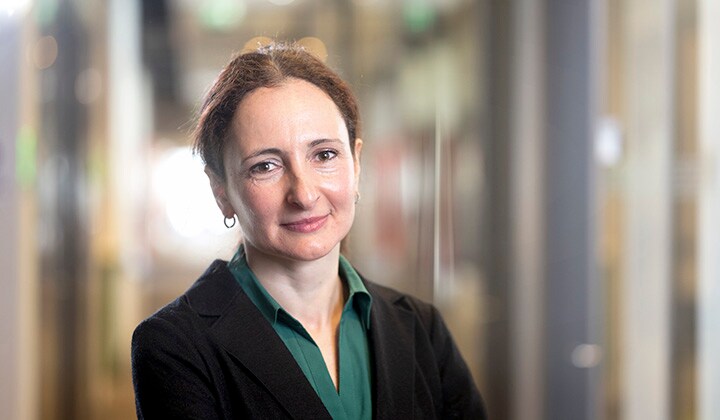
Waar denk je dat de grootste kansen liggen?
"We gebruiken AI al op verschillende manieren, zoals voor het genereren van snellere en betere MRI-beelden, het voorspellen van systeemonderhoud en het detecteren van slaappatronen. De grootste kans ligt in groter denken. We kunnen elke dag kleine stappen zetten om onze technologie stukje bij beetje te verbeteren, en dat is goed, maar ik daag mezelf en anderen altijd uit om groot te dromen. Wat kunnen we doen met AI over 5 of 10 jaar? En wat moeten we vandaag doen om dat voor elkaar te krijgen?"
Ik daag mezelf en anderen altijd uit om groot te dromen. Wat kunnen we doen met AI over 5 of 10 jaar? En wat moeten we vandaag doen om dat voor elkaar te krijgen?
Anca Bucur
Data & AI Scientist
"Dat is ook iets wat ik vaak hoor van clinici met wie we veel samenwerken om innovatie in de gezondheidszorg met technologie verder brengen. Ze verwachten van ons als gezondheidstechnologiebedrijf ook dat we groot denken, dat we een duidelijk beeld hebben van de toekomst van de gezondheidszorg en dat we ernaar handelen om het waar te maken. Om daar een rol in te kunnen spelen, dat geeft mij de meeste voldoening."
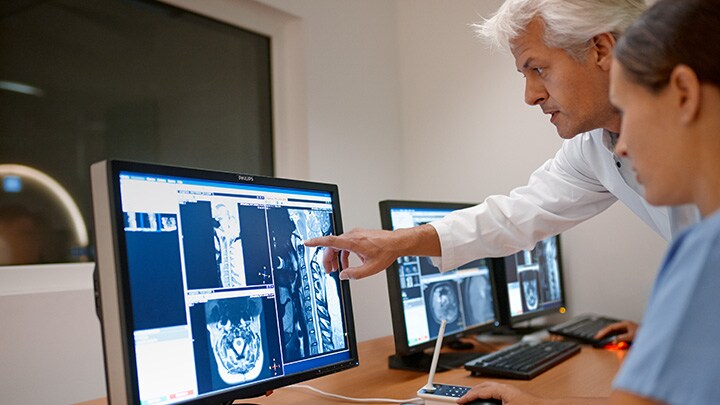
Zowel de technologie als de samenwerking in het veld vormen in je werk een belangrijke rol. Welke van de twee vind je het leukst?
"Inmiddels denk ik dat het een niet meer zonder het ander kan. Geleidelijk is mijn rol breder geworden, naar een informaticus met diepgaande klinische kennis en naar die van een ondernemer. In 2017 kreeg ik de kans om een nieuwe propositie te creëren binnen Philips, genaamd Cohort Builder. Het voelde als het starten van een bedrijf binnen Philips. Samen met mijn team kregen we de tijd en middelen om een geheel nieuw aanbod te creëren."
"We hebben een technologie ontwikkeld die ziekenhuizen helpt om bestaande data te gebruiken voor klinisch onderzoek, op de meest efficiënte manier. Dit is voor de meeste ziekenhuizen een grote uitdaging. Je moet je voorstellen dat ze al veel onderzoek doen, bijvoorbeeld om de behandeluitkomsten van patiënten te begrijpen en te verbeteren. Of ze voeren elk jaar meerdere klinische trials uit om te kijken of een nieuwe behandeling werkt. Als iedere onderzoeker op eigen houtje patiëntgegevens moet verzamelen, uit verschillende, heterogene bronnen, is dat erg inefficiënt."
We hebben een technologie ontwikkeld die ziekenhuizen helpt om bestaande data te gebruiken voor klinisch onderzoek, op de meest efficiënte manier. Dit is voor de meeste ziekenhuizen een grote uitdaging.
Anca Bucur
Data & AI Scientist
"Cohort Builder is, zoals de naam al zegt, een technologie die kan helpen cohorten, bijvoorbeeld patiëntgroepen met bepaalde kenmerken, te selecteren uit grote data repositories. Zo kan een klinische gebruiker bestaande datasets eenvoudiger verkennen, in plaats van voor elke nieuwe onderzoeksvraag nieuwe patiëntgegevens te verzamelen of te zoeken."
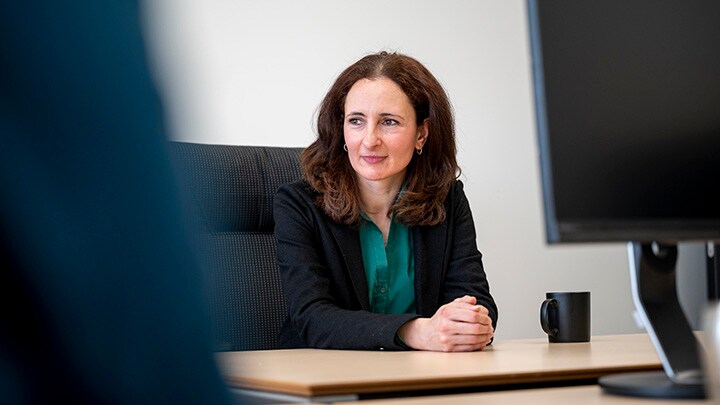
"Dit avontuur heeft wel een aantal interessante deuren geopend. In 2019 werd ons team geselecteerd om deel te nemen aan een tech sprint die leidde tot een eindpresentatie in het Witte Huis. We moesten innovatieve manieren bedenken om de patiëntenwerving voor klinische studies te verbeteren. We waren het enige Europese team daar, en we sloten ons aan bij klinische experts, voorvechters, Amerikaanse overheidsinstanties en gezondheidstechnologiebedrijven. Dat was echt een unieke ervaring, en ook een kans om te laten zien dat Philips vooroploopt met innovatie op dit gebied."
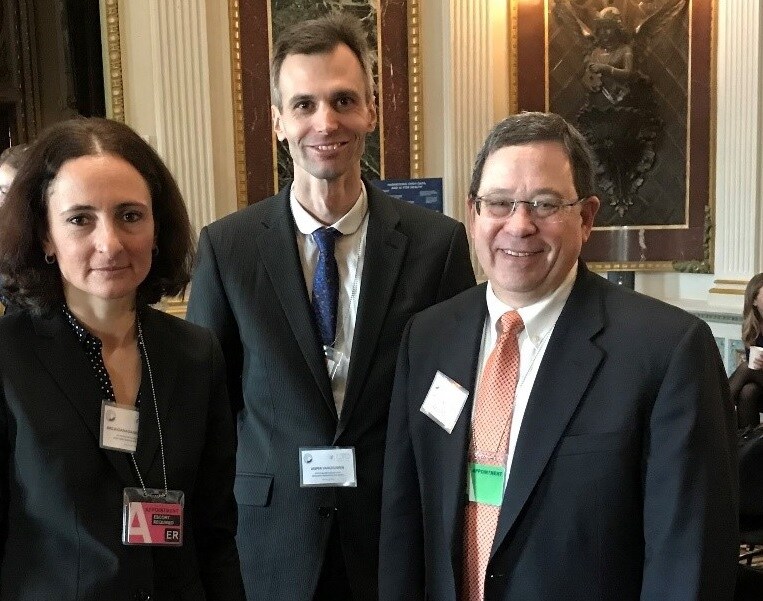
Onlangs won je een Invention Award voor je bijdrage aan Philips Research. Op welke patenten ben je het meest trots?
"Het meest trots ben ik op de patenten die onze strategie op het gebied van data en AI ondersteunen. Dit zijn patenten met betrekking tot federated identity management, heterogene vertrouwensomgevingen, ground truth creation en validatie. Ook al zijn ze jaren geleden gecreëerd, ze zijn relevant voor ons bedrijf bij het opschalen van AI."
Binnen Philips werken elke dag duizenden uitvinders aan de technologieën van morgen. Wat drijft hen? Hoe komen ze op hun ideeën en hoe brengen ze die met succes op de markt? In de serie Impactful Inventors geven we antwoord op deze vragen.
Mark Johnson, de man van honderden patenten: “Er is geen opleiding tot uitvinder”
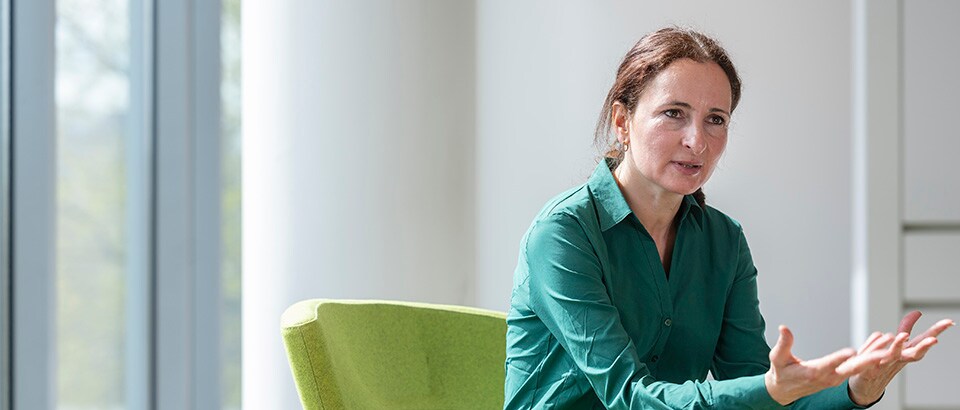
“We were the only European team invited to present at an AI event in the US White House”
Turning data and artificial intelligence from a promise to an actual, tangible clinical benefit; that, in a nutshell, is the mission of Anca Bucur. Originally she started doing that within Philips as a computer scientist, but gradually her role expanded to that of an inventor, entrepreneur and external expert for the European Commission.
It even secured her a ticket at a hackathon at the White House.
Artificial intelligence (AI) is considered as one of the most promising technologies in healthcare and other industries. When did your fascination for it start?
“Long before it was this popular, I would say. Shortly after I joined Philips in 2003, machine learning and semantic reasoning were two of my focus areas. Today, fortunately, people have become much more aware of the true potential of this technology, as it evolved, grew and matured.”
“In my work, I help colleagues in research and business to realize that potential. Together we look at how we might be able to further improve our products with the help of AI, to add tangible benefits for our customers. Currently I work on Next Gen AI topics, which are key enablers for the Philips global Data and AI Centre of Excellence. We are helping to scale AI adoption across all Philips business clusters.”

Where do you think the biggest opportunities are?
“We are already using AI in several areas, like generating faster and better MRI images, predicting when a system needs maintenance and detecting sleep patterns for example. I would say that the big opportunity is to think big. We can take small steps every day to improve our technology bit by bit, and this is good, but I always like to challenge myself and others to dream big. What can we do in 5 or 10 years? And what do we need to do today to make that happen?”
I like to challenge myself and others to dream big. What can we do in 5 or 10 years? And what do we need to do today to make that happen?
Anca Bucur
Data & AI Scientist
“This is also something that I hear a lot from clinicians that partner with us in innovation, they all have in common that they want to change the world with better healthcare technology. They expect us as a medical technology company to think big as well, to have a clear picture of the future of healthcare and to act on it to make it happen. To be able to play a role in this, that is what gives me most satisfaction.”

It sounds like you work both on technology, while at the same time collaborating with colleagues and clinicians to make innovation a reality. Which one do you like most?
“By now, I don’t think one can go without the other. I think my role has gradually expanded from computer scientist by gathering in-depth clinical knowledge and to entrepreneur. In 2017 I got the opportunity to create a new proposition within Philips, called Cohort Builder. It felt like starting a company within Philips. Together with my team, we were given the time and resources to create an entirely new offering.”
“We developed a technology that helps hospitals to use existing data for clinical research, in the most efficient way. This is a big challenge for most hospitals. You must imagine that hospitals do a lot of research to understand and improve the outcomes of their patients and run multiple clinical trials each year, for example to see if a new treatment works. If every researcher needs to gather patient data on their own, out of scattered and heterogeneous sources, that is very inefficient.”
We developed a technology that helps hospitals to use existing data for clinical research, in the most efficient way. This is a big challenge for most hospitals.
Anca Bucur
Data & AI Scientist
“Cohort Builder, as the name says, is a technology that can help to select cohorts, for instance groups of patients with certain characteristics, out of large data repositories. This helps clinical users to quickly and intuitively explore existing datasets, instead of having to gather or search for new patient data for each new research question.”

“This adventure did open some interesting doors. In 2019 our team was selected to participate in a tech sprint that led up to a final presentation in the White House; the idea was to have teams look at innovative ways to address challenging issues around patient recruitment in clinical trials. We were the only European team there, and we joined clinical experts, patient advocates, US government agencies, and health tech companies. That was truly a unique experience, and also an opportunity to showcase that Philips is in the forefront of innovation in this field.”
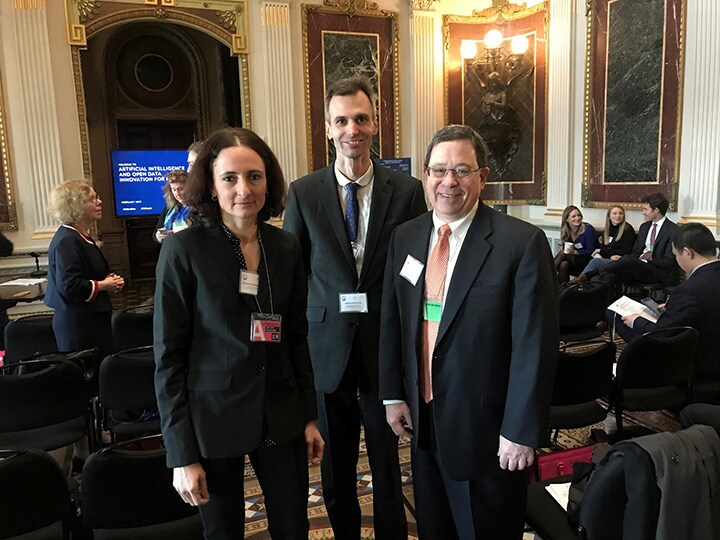
Recently you won an Invention Award for your contribution to Philips Research. Which patents are you most proud of?
“I find the highest impact in several patents that support our current strategy in data and AI. These are patents related to federated identity management, heterogeneous trust environments, ground truth creation and validation. Even though they were created years ago, they are relevant for our company in scaling up AI.”
Within Philips, every day thousands of inventors work on tomorrow’s technologies. What drives them? How do they come up with their ideas and how do they successfully bring them to market? In the Impactful Inventors series, we will answer these questions.
Also read:
Henk van Houten, Chief Technology Officer: "Invention Awards winners are the heroes of Philips Research"
Mark Johnson, the man of hundreds of patents: "There is no training to become an inventor"
Deel op social media
Onderwerpen
Contact
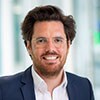
Tommie Dijstelbloem
Woordvoerder Philips Benelux Tel: +31 6 19 28 83 20
You are about to visit a Philips global content page
Continue









